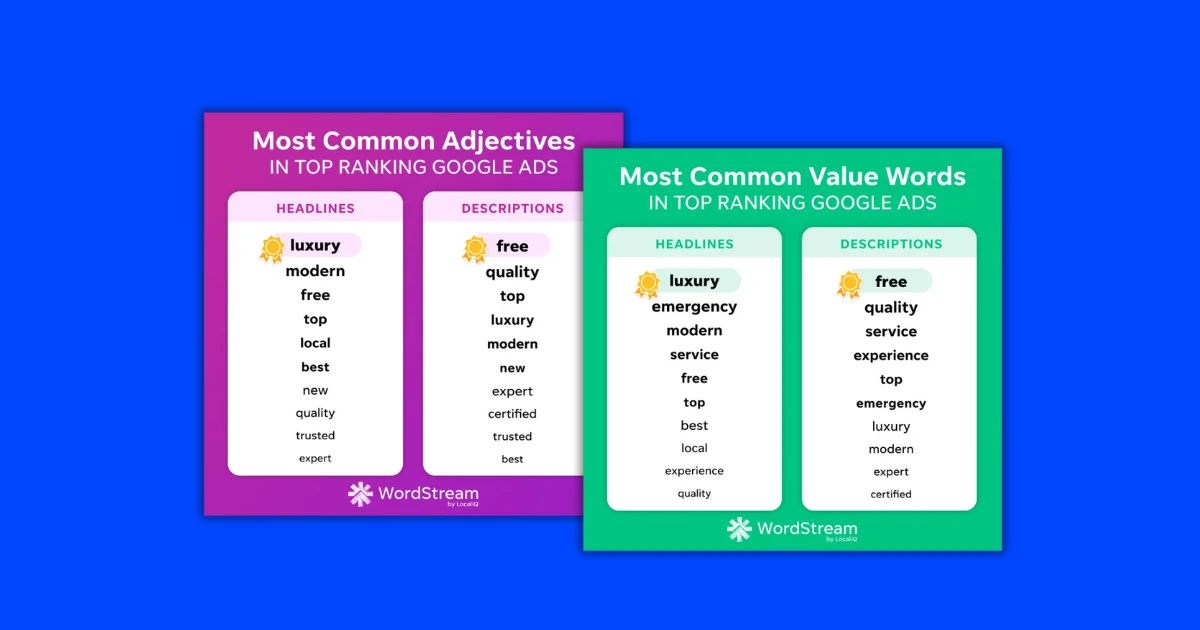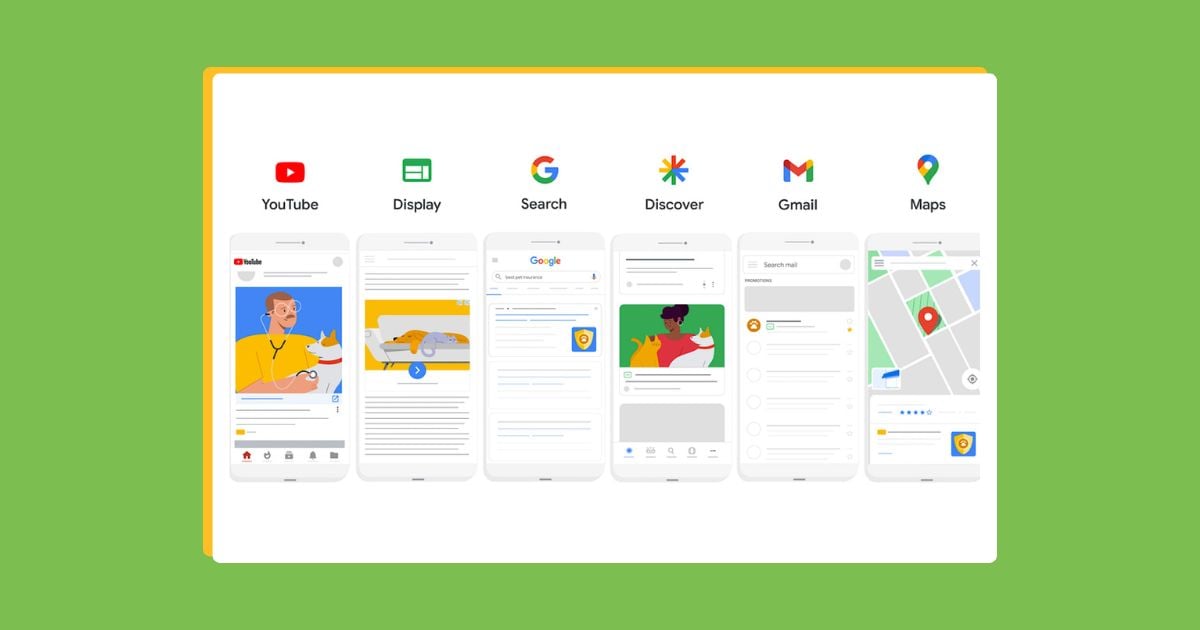AI is becoming an increasingly integral part of online marketing as more advertisers adopt “smart” options in platforms and use AI tools to help generate, manage, optimize, and report on campaigns.
But from another angle, AI has also been impacting how and where our ads can show in a Google search results page. Earlier this year, Google released AI Mode, a new user experience that will continue to change the SERP game. That announcement immediately prompted many people to ask, “What will ads in AI Mode look like, and how can I get my ads to show there?”
Google is now testing ads in AI Mode, so ahead of a larger rollout later this year, we want to give an overview of what AI Mode is, discuss the settings you need to employ to be included, and what that could mean for your advertising strategy moving forward.
Contents
- What is Google AI Mode?
- The types of queries best suited for ads in AI Mode
- Requirements to show ads in AI Mode
- What could ads in AI Mode mean for businesses?
- Should you be focused on showing ads in AI Mode?
What is AI Mode in Google?
AI Mode is a self-contained search experience designed to use AI in a conversation-type experience to answer complex queries. It’s powered by Gemini, Google’s largest and most capable AI model, and compared to normal search, which is more of a one-and-done type of experience, AI Mode is intended to drive further research and learning with multiple rounds of questions or query refinement. It will then deliver a range of information based on how that exchange goes.
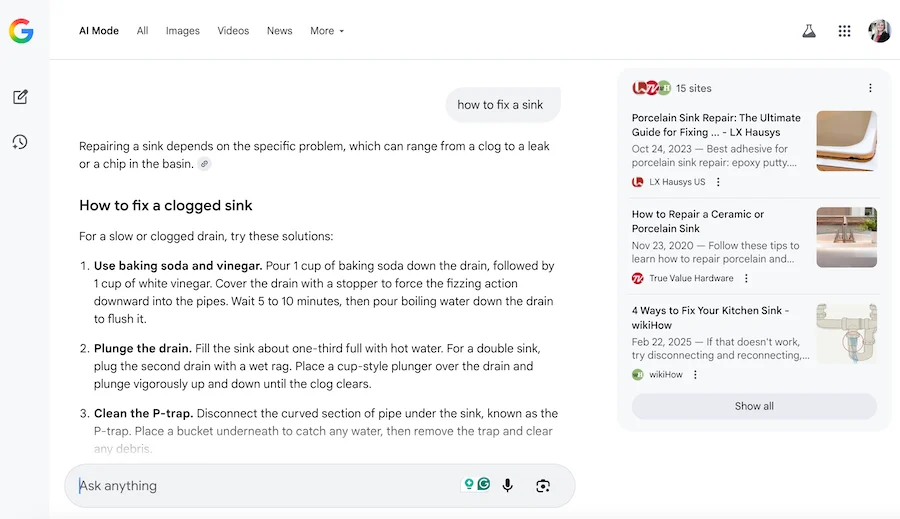
As a quick aside, here’s the next question we almost always get after defining AI Mode: “Is AI Mode different from AI Overviews?”
In short, yes and no.
Yes, from the user experience, AI Mode is different from AI Overviews.
AI Overviews show up within the regular search results and are just a single component of that page of answers compared to AI Mode’s contained experience. They also don’t allow for direct reengagement based on the answers provided. You can click on the supporting documentation links or the ads in AI Overviews, but if you want to go further than that, you have to conduct another search, effectively losing the thread of the previous one, and you may or may not be served another AI Overview.
But also, no, AI Mode and AI Overviews are extremely closely related to each other. The information served in them is usually pretty close (you can compare by clicking between the AI Mode and All tabs in Google), and the way advertisers can engage with them is pretty similar.
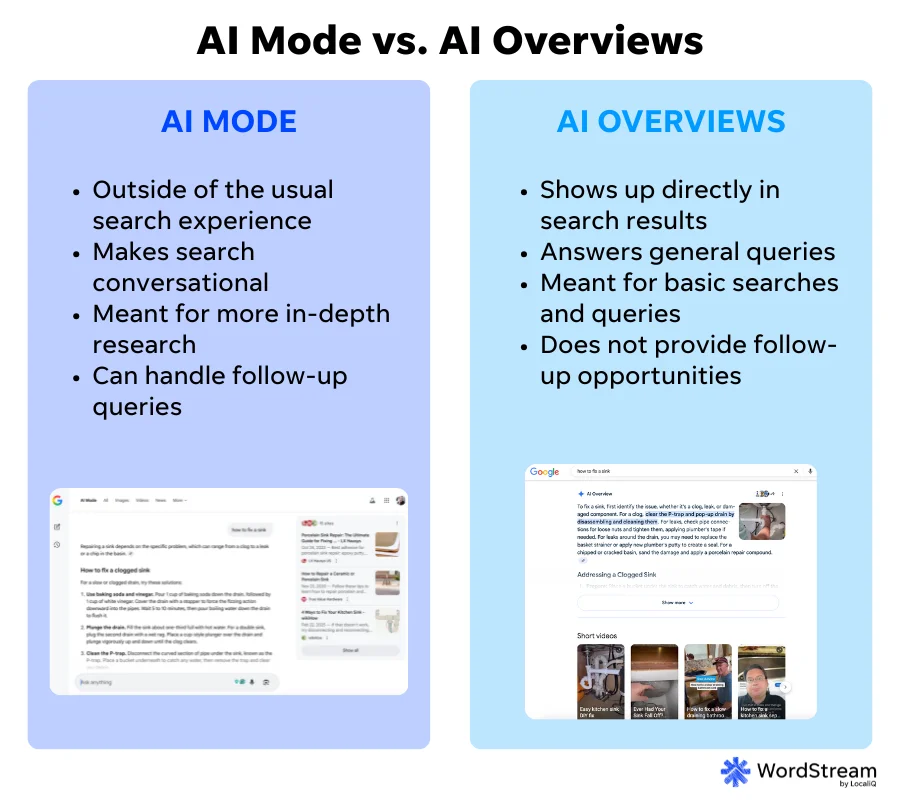
🔎 SEO has evolved…need help understanding the new rules for ranking where it matters? Download our free guide >> How to Do SEO Right—Right Now!
The types of queries best suited for AI Mode (and AI Overviews) ads
To try and discern the impact AI Mode may have for advertisers, we need to understand the types of queries that it’s best suited for.
Since AI Mode is relatively new, we need to take some direction from the documentation around AI Overviews to understand how AI Mode might be impacted. Let’s dig into what we do know about AI Overviews and see how that can inform our expectations about AI Mode.
AI Overviews are not shown for all query types. They’re usually shown for queries that require a longer, in-depth answer rather than a series of links. That means AI Overviews are likely only going to show when the search is:
- Broad and information-based
- Comparison based
- Multi-step
- Explanatory
None of these is heavily focused on transactions or sales. They’re all more research or learning based and, more often than not, an ad likely won’t show for this type of query anyway.
If you are getting search volume through your campaigns for these higher funnel, more generalized queries, you could likely already be seeing a decrease in impressions as AI Overviews are being shown more often and are likely pushing ads down the page.
👀 Looking for more ways to drive people to your site? Free guide >> 25 Ways to Increase Traffic to Your Website
Requirements to show ads in AI Mode
To know the impact AI Mode may have on advertising, we also need to know the criteria required to show your ads in AI Overviews. As ads on Google AI Mode are in the experimental stage, there’s very little documentation around it (just this brief from Google to brands in August).
Unlike regular keyword targeting, where the search term simply needs to closely match what your keywords are for an ad to show, ads on AI Mode require much more cohesion for the searcher. Not only does your keyword need to be relevant to the query, but your ad content and landing pages also need to be relevant to the answers provided by AI Mode as well (this is also how ads work in AI Overviews).
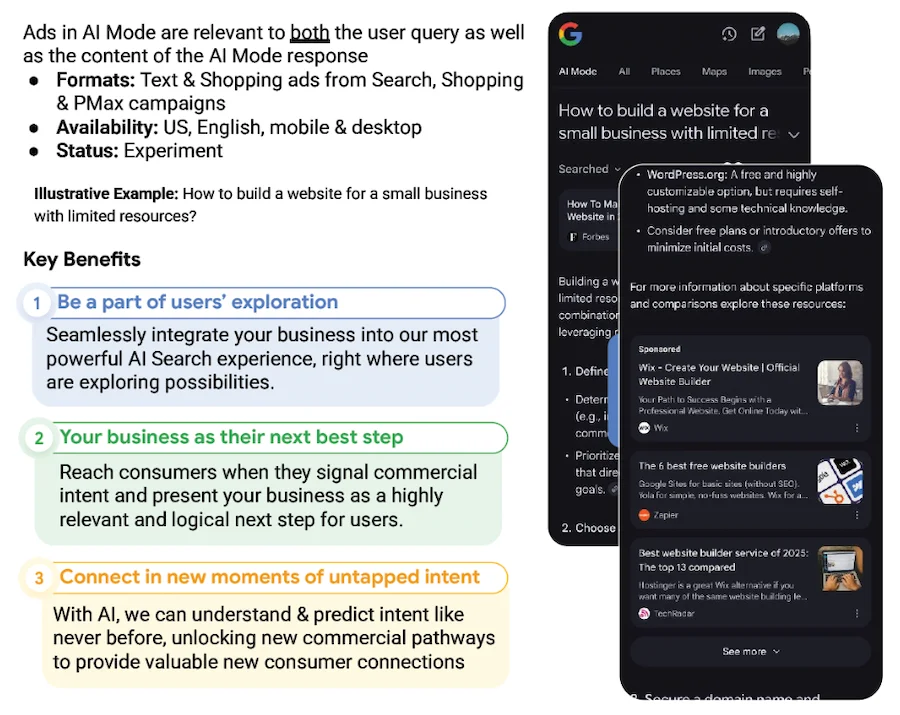
Additionally, just like AI Overviews ads, Google is requiring advertisers to opt into AI-powered targeting solutions like broad match, AI Max for Search, or keywordless targeting that accompanies Dynamic Search Ads or Performance Max.

🛑 Running Google Ads and want to see where you can improve results? Find out with a free, instant audit >> Google Ads Performance Grader
What could ads in AI Mode mean for businesses?
Between the types of queries best suited for AI Mode and the settings required for advertisers to show up there, the implications for advertisers could be pretty large.
A varied marketing approach
For your ad to show in AI Mode (or in AI Overviews), you’re likely going to have to shift away from hard selling, as the queries these features are showing for aren’t the right fit. Additionally, you’re likely not going to get away with short landing pages with the minimum viable content to make the sale. Odds are, those pages aren’t going to be supportive enough of the AI answer experience to qualify your ads.
Targeting expansion
You’re also going to have to lean into Google’s intent-based query matching to leverage these placements. Without broad match or keywordless matching, you won’t be eligible for these new placements. Additionally, the expanded reach of campaigns like Performance Max goes beyond Search and into many other Google properties like YouTube and Gmail, which is obviously quite a big change.
A bigger role for creative assets
If you opt into Performance Max campaigns or leverage the Text Customization and Final URL expansion features within AI Max for Search, you’re giving at least some control to Google when it comes to your ad copy. They’ll be able to create new text and visual components to leverage in your ads as you compete for these queries or expand into new placements that are much more creative forward.
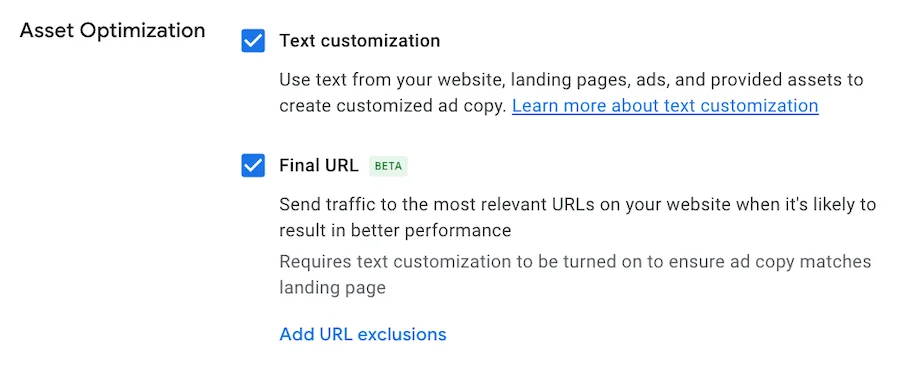
Should you be focused on showing ads in AI Mode?
It’s no secret that things are changing quickly with AI and that Google is vying to be at the forefront of that industry. But it’s also no secret that Google still heavily relies on ads to account for much of its revenue each year. With those two truths in mind, it’s hardly a surprise that ads are being integrated into Google’s AI offerings from its search platform.
In my estimation, getting your ads to show with AI Mode (or AI Overviews) likely shouldn’t be your main goal with advertising. Your goal is still to hit your profitability or volume goals, but that doesn’t mean this shouldn’t be on your mind.
At this point in time, the advertisers who test and iterate on their strategy to both continue to see success with existing campaigns as well as find out what works for them in an AI-centered search experience will end up reaping the rewards in the future. Maybe it makes sense to opt into AI Max for a little while and see how it does. Have you run Performance Max campaigns recently? There have been a ton of updates to give advertisers better controls, and if you leverage them, maybe this campaign type can be profitable and get you eligible to show in AI experiences.
What to do next
In the immediate future, I don’t foresee AI Mode having a large impact on advertisers who have a dialed-in campaign strategy. At least not while user behavior is still relatively the same. That will almost certainly change over time as users get more used to AI and figure out ways to be more efficient with it. The advertiser who tests and learns in these early stages will be ahead of the game when these AI features are more widely adopted.
For now, it’s important to keep up with the latest changes, keep an eye on your existing Google Ads campaigns, and use AI in smart ways to further your marketing strategy.


